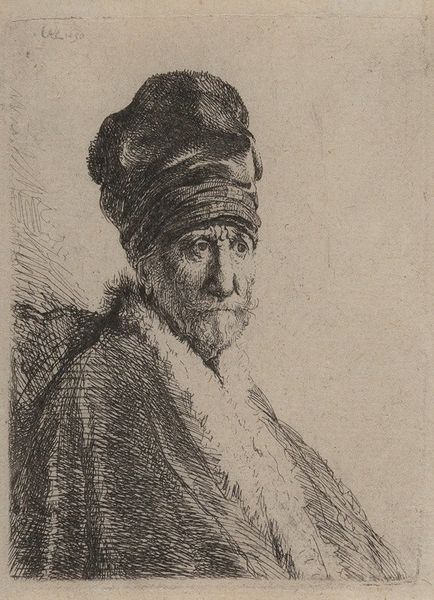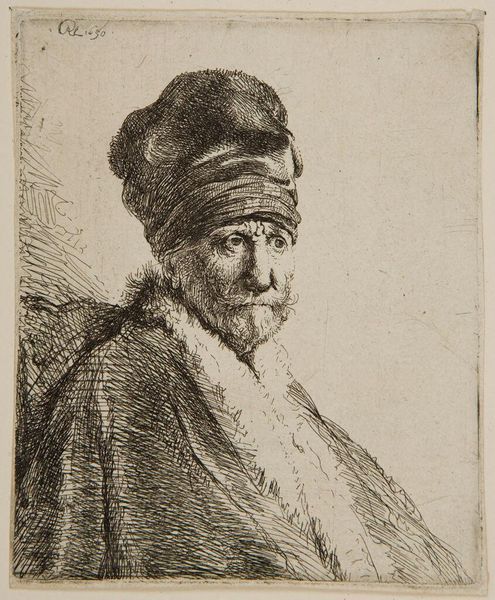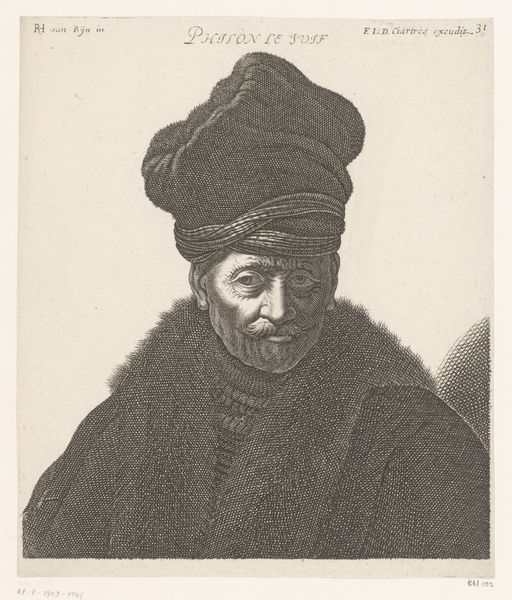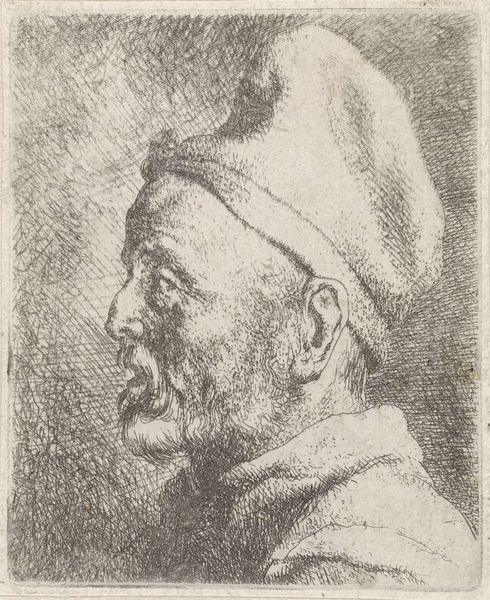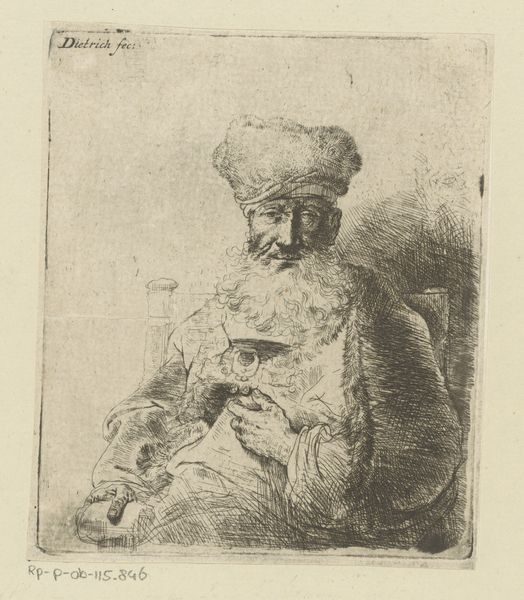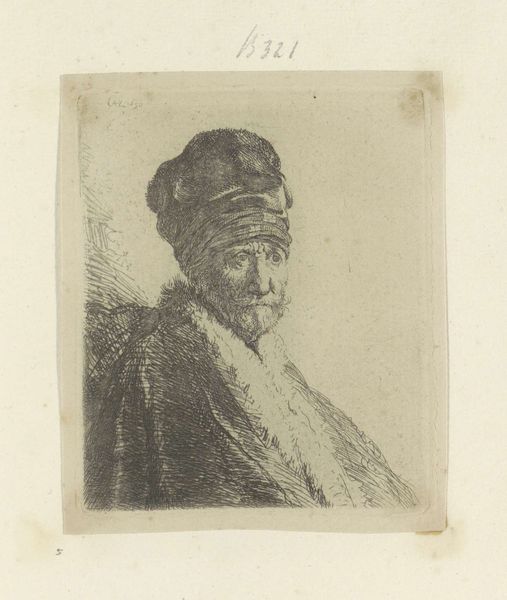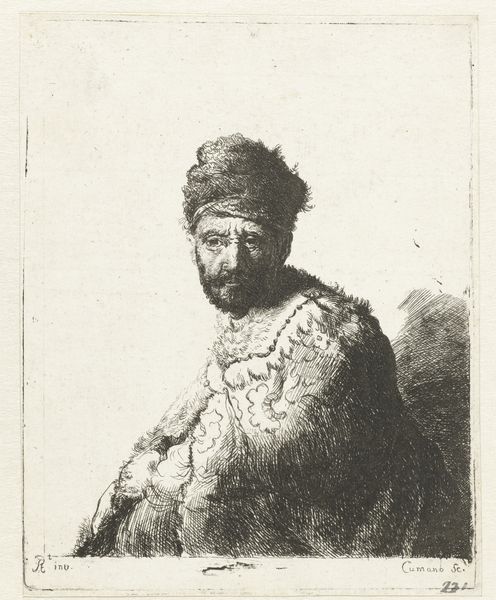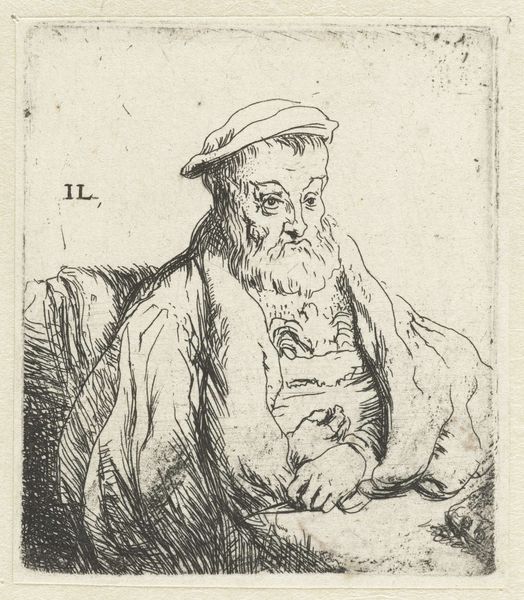
Bust of a man wearing a high cap, three-quarters right: the artist's father (?) 1630
0:00
0:00
drawing, etching, intaglio
#
portrait
#
drawing
#
baroque
#
dutch-golden-age
#
etching
#
intaglio
#
pencil drawing
#
portrait drawing
Dimensions: height 106 mm, width 89 mm
Copyright: Rijks Museum: Open Domain
This is a print made by Rembrandt van Rijn, likely around 1630, depicting a man in a high cap, possibly his father. It was made using a technique called etching, where a metal plate is coated with a waxy ground, the design is scratched into the ground, and then acid is applied, biting into the exposed metal. Notice the fineness of the lines, achieved by controlling the depth of the acid bite. See how Rembrandt uses dense clusters of lines to create shadow and volume, particularly in the cap and the sitter’s face. This additive process of building up the image is key to the print’s unique character, so different from a drawing in ink. The resulting print, multiplied in many impressions, was more affordable than a painting, making Rembrandt’s artistry accessible to a wider audience, and creating a market that allowed his genius to flourish. The labor-intensive nature of etching, combined with its capacity for reproduction, embodies the complex relationship between craft, art, and commerce in the 17th century.
Comments
No comments
Be the first to comment and join the conversation on the ultimate creative platform.
